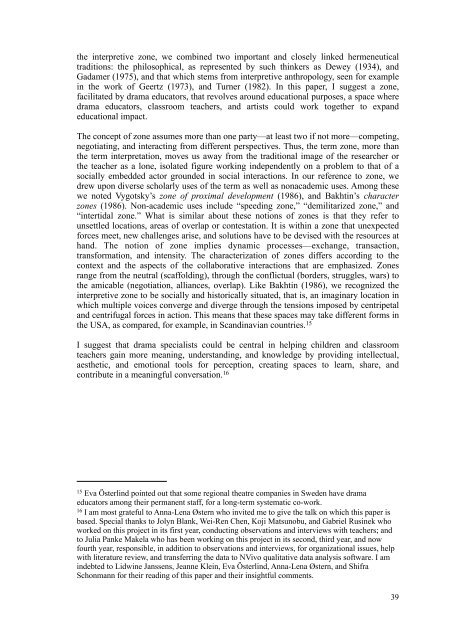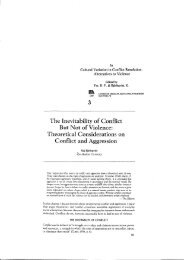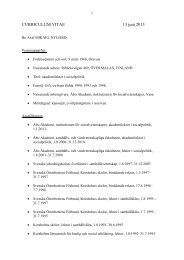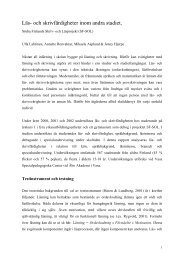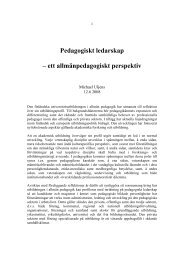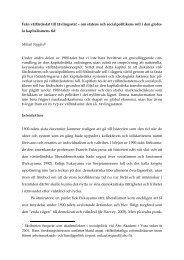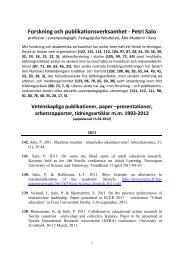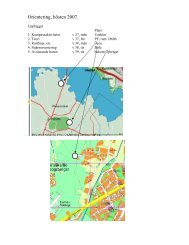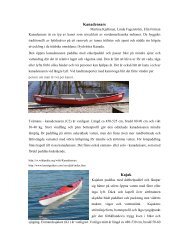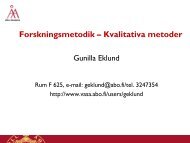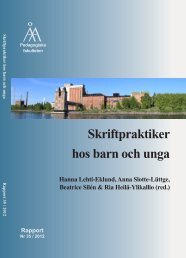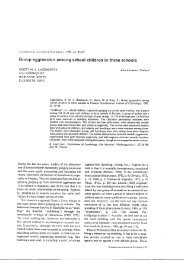Drama Boreale - Åbo Akademi
Drama Boreale - Åbo Akademi
Drama Boreale - Åbo Akademi
You also want an ePaper? Increase the reach of your titles
YUMPU automatically turns print PDFs into web optimized ePapers that Google loves.
the interpretive zone, we combined two important and closely linked hermeneutical<br />
traditions: the philosophical, as represented by such thinkers as Dewey (1934), and<br />
Gadamer (1975), and that which stems from interpretive anthropology, seen for example<br />
in the work of Geertz (1973), and Turner (1982). In this paper, I suggest a zone,<br />
facilitated by drama educators, that revolves around educational purposes, a space where<br />
drama educators, classroom teachers, and artists could work together to expand<br />
educational impact.<br />
The concept of zone assumes more than one party—at least two if not more—competing,<br />
negotiating, and interacting from different perspectives. Thus, the term zone, more than<br />
the term interpretation, moves us away from the traditional image of the researcher or<br />
the teacher as a lone, isolated figure working independently on a problem to that of a<br />
socially embedded actor grounded in social interactions. In our reference to zone, we<br />
drew upon diverse scholarly uses of the term as well as nonacademic uses. Among these<br />
we noted Vygotsky’s zone of proximal development (1986), and Bakhtin’s character<br />
zones (1986). Non-academic uses include “speeding zone,” “demilitarized zone,” and<br />
“intertidal zone.” What is similar about these notions of zones is that they refer to<br />
unsettled locations, areas of overlap or contestation. It is within a zone that unexpected<br />
forces meet, new challenges arise, and solutions have to be devised with the resources at<br />
hand. The notion of zone implies dynamic processes—exchange, transaction,<br />
transformation, and intensity. The characterization of zones differs according to the<br />
context and the aspects of the collaborative interactions that are emphasized. Zones<br />
range from the neutral (scaffolding), through the conflictual (borders, struggles, wars) to<br />
the amicable (negotiation, alliances, overlap). Like Bakhtin (1986), we recognized the<br />
interpretive zone to be socially and historically situated, that is, an imaginary location in<br />
which multiple voices converge and diverge through the tensions imposed by centripetal<br />
and centrifugal forces in action. This means that these spaces may take different forms in<br />
the USA, as compared, for example, in Scandinavian countries. 15<br />
I suggest that drama specialists could be central in helping children and classroom<br />
teachers gain more meaning, understanding, and knowledge by providing intellectual,<br />
aesthetic, and emotional tools for perception, creating spaces to learn, share, and<br />
contribute in a meaningful conversation. 16<br />
15 Eva Österlind pointed out that some regional theatre companies in Sweden have drama<br />
educators among their permanent staff, for a long-term systematic co-work.<br />
16 I am most grateful to Anna-Lena Østern who invited me to give the talk on which this paper is<br />
based. Special thanks to Jolyn Blank, Wei-Ren Chen, Koji Matsunobu, and Gabriel Rusinek who<br />
worked on this project in its first year, conducting observations and interviews with teachers; and<br />
to Julia Panke Makela who has been working on this project in its second, third year, and now<br />
fourth year, responsible, in addition to observations and interviews, for organizational issues, help<br />
with literature review, and transferring the data to NVivo qualitative data analysis software. I am<br />
indebted to Lidwine Janssens, Jeanne Klein, Eva Österlind, Anna-Lena Østern, and Shifra<br />
Schonmann for their reading of this paper and their insightful comments.<br />
39


